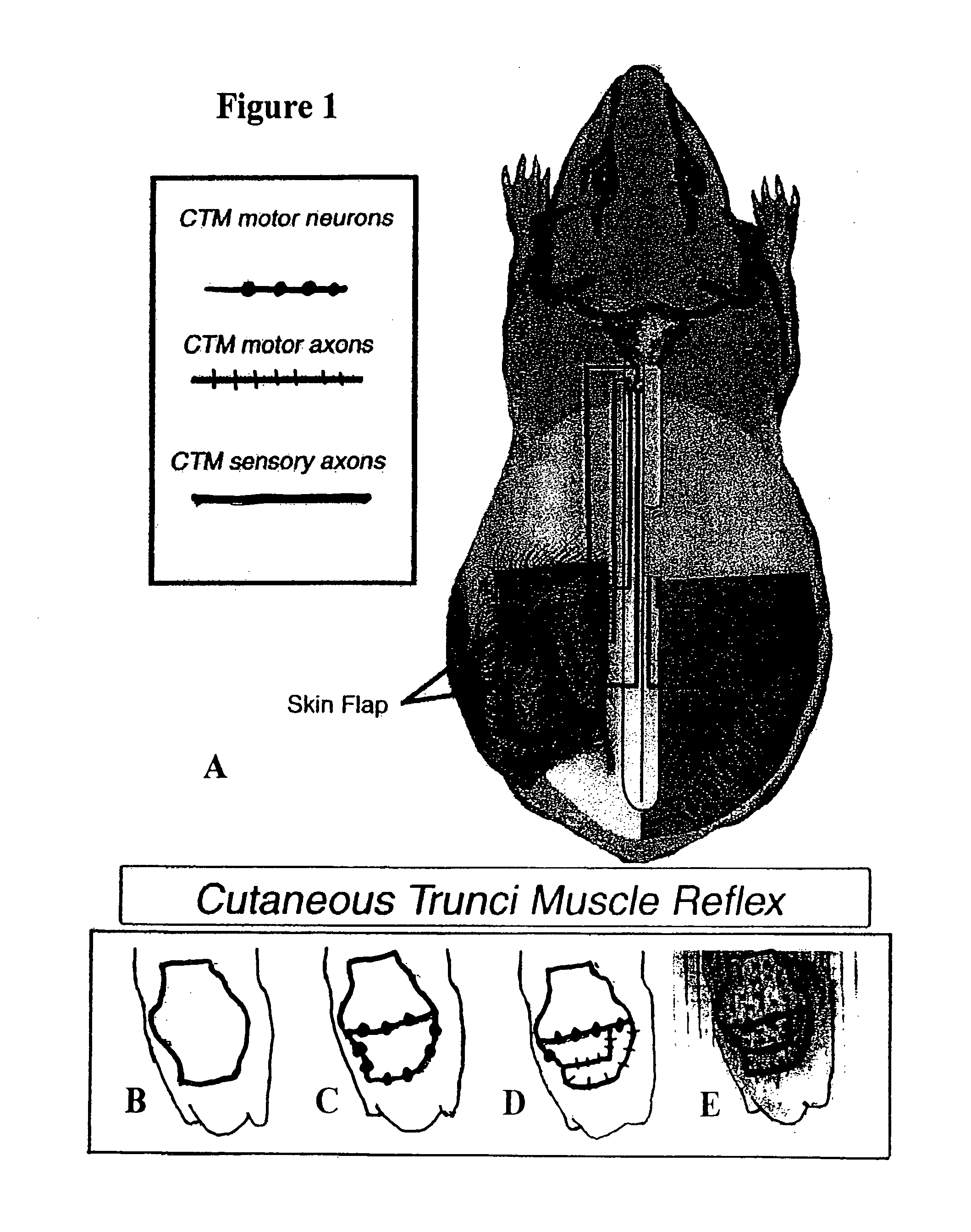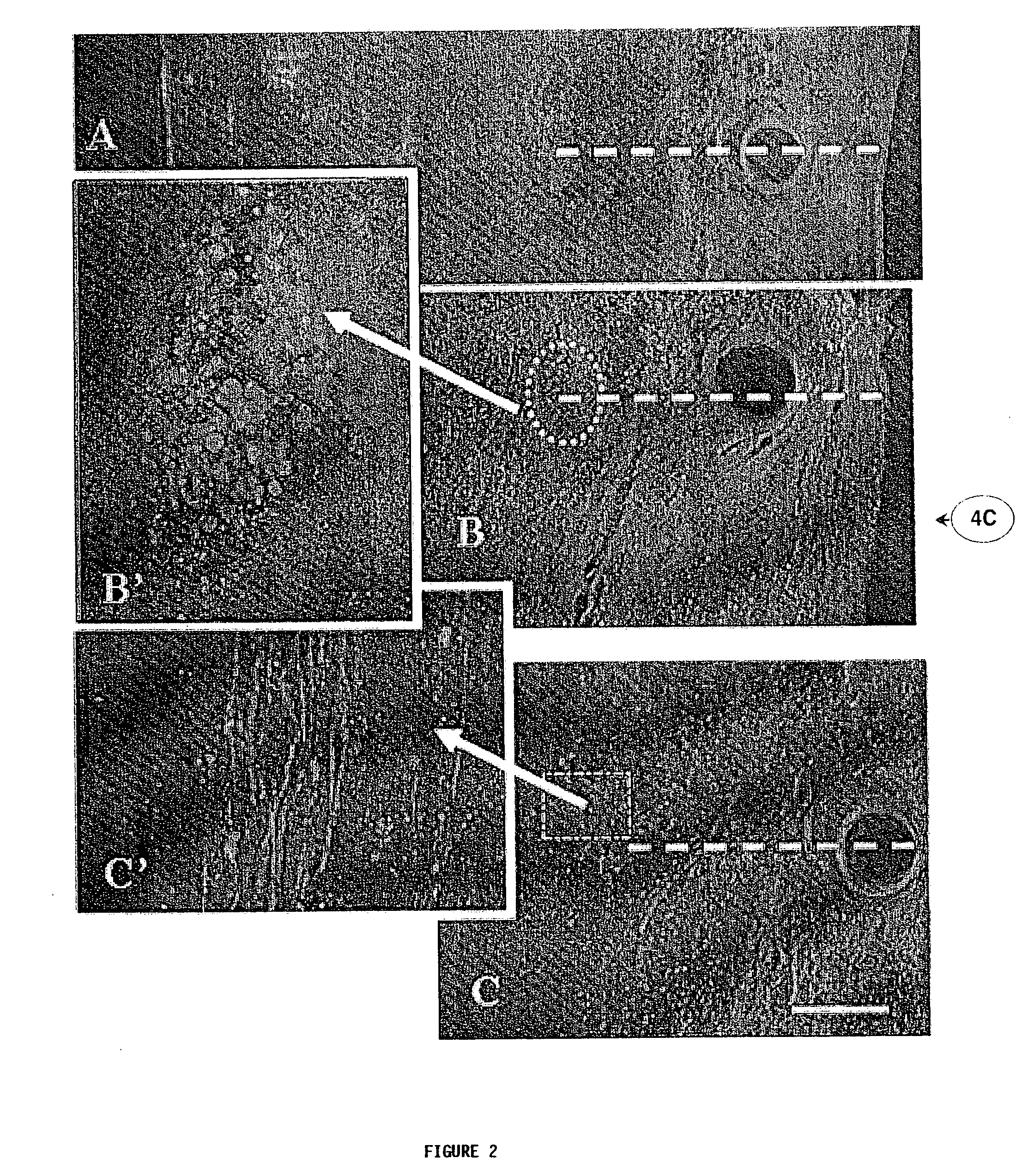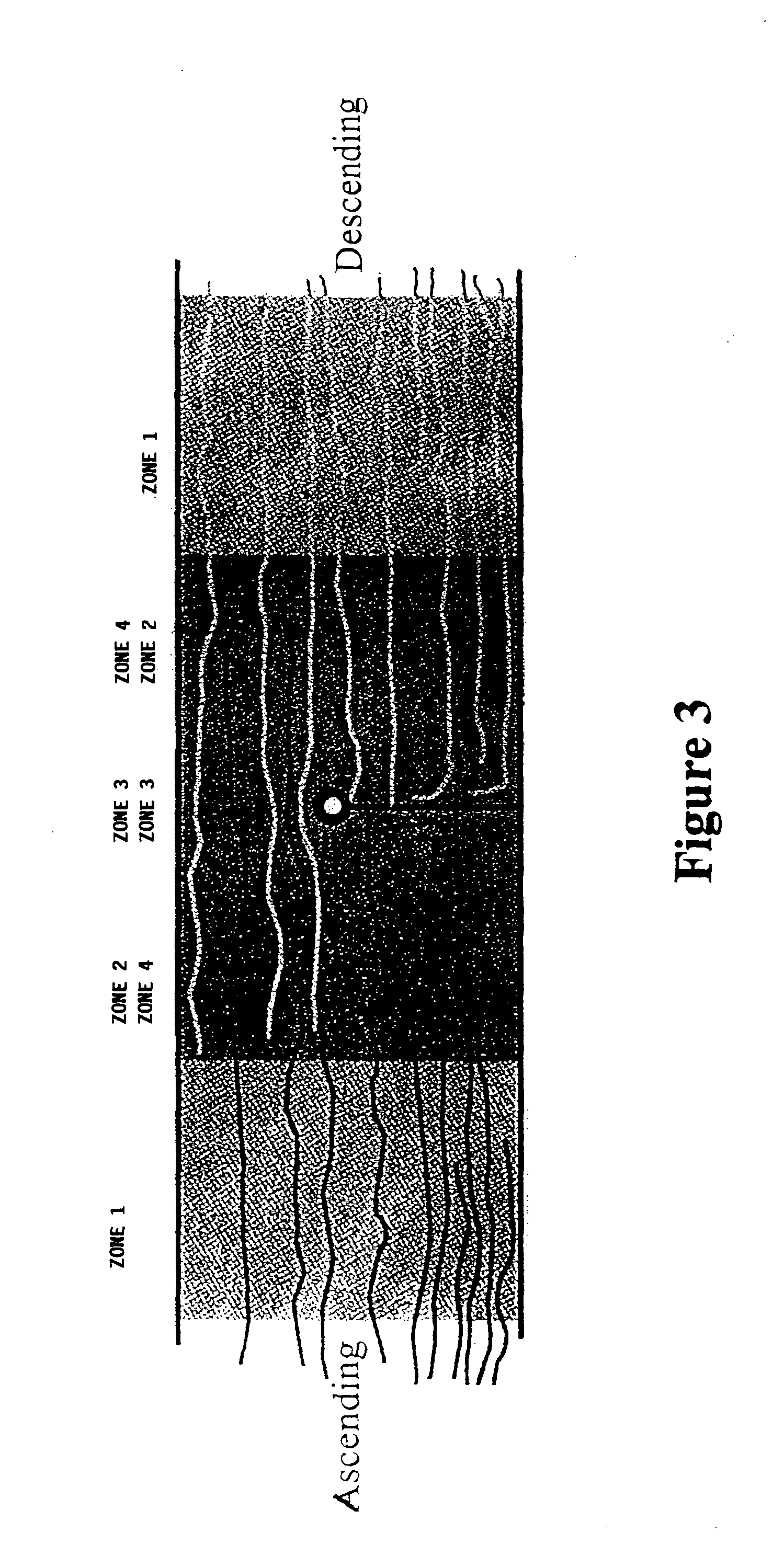Method of treatment for central nervous system injury
a central nervous system and injury technology, applied in the field of central nervous system injury treatment, can solve the problems of paralysis and quadriplegia, paralysis of varying degrees, and the most devastating and disabling injuries of the central nervous system, and achieve the effect of partial recovery of nerve function and behavior, and extension of the usefulness of the treatment option
- Summary
- Abstract
- Description
- Claims
- Application Information
AI Technical Summary
Benefits of technology
Problems solved by technology
Method used
Image
Examples
example 1
Behavioral and Anatomical Synergism by Simultaneous Application of Two Neurotrophic Factors: Applied Gradients of Extracellular Voltage and Inosine
[0046]With this example, a combination treatment of oscillating field stimulation (OFS) and inosine infusion was used to enhance functional responses after spinal cord injury (SCI). Chronic cutaneous trunci muscle (CTM) functional deficits in the adult guinea pig were chosen for study as the SCI behavioral model for several reasons. First, transection of the relevant ascending CTM white matter tracts produces permanent loss of CTM functions for the life of the animal. And, although the behavioral deficits have been partially reversed by application of electrical fields during the acute stage of the injury in both guinea pigs and clinical cases of paraplegia in dogs (Borgens et al. (1990) J. Comp. Neurol. 296, 634-653; Borgens et al. (1993) Restor Neurol Neurosci 5, 173-179; Borgens (1999) Neuroscience 91, 251-64)), recovery of function ha...
example 2
Effect of Combined OFS and Inosine Treatment in Clinical Cases of Paraplegia in Dogs
[0082]A clinical trial of OFS in combination with inosine will be performed in dogs with naturally occurring spinal cord injuries due to intervetebral disc herniation. Criteria for admission will be as previously presented in Borgens et al. (1993) Restor Neurol Neurosci 5, 305-322. Briefly, criteria for selection may include one or more of the following: complete paraplegia, defined by neurological examination and electrophysiological testing; intact segmental reflexes; radiologic and myelographic evidence of spinal cord compression due to disc herniation and a focal lesion, without appreciable rostocaudal spread of necrosis; weight less than 16 kilograms. Both acute and chronic injuries may be studied. An acute injury is characterized by the onset of paralysis less than one month before treatment. A chronic injury is characterized by the onset of paralysis more than one month before treatment. Surgi...
example 3
Human Clinical Trial of OFS and Inosine Treatment
[0083]Patients with spinal cord injuries will be recruited to participate in Phase I, Phase II and Phase III clinical trials of the combined treatment with OFS and inosine, as described herein. Approval will be obtained from the appropriate Institutional Review Board. Inosine will be obtained from a supplier that follows FDA's Good Manufacturing Practices (GMP). Patients will be observed for a period of one year following treatment.
PUM
 Login to View More
Login to View More Abstract
Description
Claims
Application Information
 Login to View More
Login to View More - R&D
- Intellectual Property
- Life Sciences
- Materials
- Tech Scout
- Unparalleled Data Quality
- Higher Quality Content
- 60% Fewer Hallucinations
Browse by: Latest US Patents, China's latest patents, Technical Efficacy Thesaurus, Application Domain, Technology Topic, Popular Technical Reports.
© 2025 PatSnap. All rights reserved.Legal|Privacy policy|Modern Slavery Act Transparency Statement|Sitemap|About US| Contact US: help@patsnap.com



